THCA Flower for Chronic Pain: Patient Success Stories and Research
Chronic pain affects over 50 million Americans, creating a healthcare crisis that has left patients and practitioners searching for effective, safe alternatives to traditional pharmaceuticals. As the opioid epidemic continues to claim lives and conventional pain medications often fall short of providing adequate relief, many are turning their attention to THCA flower chronic pain management solutions.
The search for natural pain management alternatives has led to remarkable discoveries about raw cannabis chronic pain management and its non-psychoactive compounds. Among these, THCA (tetrahydrocannabinolic acid) has emerged as a promising option for those seeking relief without the intoxicating effects typically associated with cannabis use. This comprehensive exploration examines the science, patient testimonials THCA, and practical applications of THCA pain relief in managing chronic conditions.
Understanding Chronic Pain: The Modern Healthcare Challenge
Chronic pain represents one of the most complex and debilitating health conditions facing modern medicine. Unlike acute pain, which serves as a protective mechanism alerting us to injury or illness, chronic pain persists long after its original purpose, often becoming a disease state in itself. This persistent discomfort affects every aspect of a person's life, from physical functioning to emotional wellbeing, relationships, and career prospects.
The landscape of chronic pain encompasses various conditions, each presenting unique challenges. Neuropathic pain, resulting from nerve damage or dysfunction, creates burning, tingling, or electric shock-like sensations that can be particularly resistant to traditional treatments. Inflammatory conditions such as rheumatoid arthritis and fibromyalgia involve complex immune system responses that create widespread pain and fatigue. Musculoskeletal disorders, including chronic back pain and osteoarthritis, affect millions of individuals, particularly as populations age.
Current treatment approaches often follow a stepped care model, beginning with over-the-counter medications like acetaminophen and NSAIDs, progressing to prescription pharmaceuticals including opioids, anticonvulsants, and antidepressants. While these medications can provide relief for some patients, they also carry significant risks and limitations. NSAIDs can cause gastrointestinal bleeding and cardiovascular complications with long-term use. Opioid medications, while effective for acute pain, carry substantial risks of dependence, tolerance, and overdose when used chronically.
The opioid crisis has fundamentally changed how healthcare providers and patients approach chronic pain management. With over 70,000 overdose deaths annually in the United States alone, the medical community has recognized the urgent need for safer, more effective alternatives. This context has created increased interest in cannabinoid chronic pain management strategies that offer therapeutic benefits without the risks associated with traditional pharmaceuticals.
Quality of life impact cannot be understated when discussing chronic pain. Patients frequently report disrupted sleep patterns, decreased physical activity, social isolation, depression, and anxiety as secondary consequences of their condition. These factors create a cycle where pain leads to dysfunction, which in turn can worsen pain perception and overall health outcomes. Breaking this cycle requires comprehensive approaches that address not only the pain itself but also its broader impacts on daily functioning and emotional wellbeing.
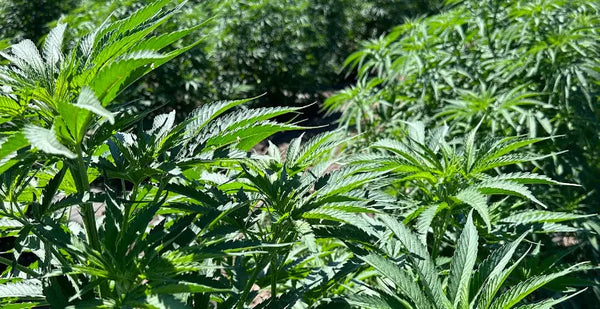
THCA Pain Relief Mechanisms: How Raw Cannabis Works
The therapeutic potential of THCA flower pain benefits lies in its unique interaction with the human endocannabinoid system (ECS), a complex network of receptors, enzymes, and endogenous cannabinoids that help regulate numerous physiological processes including pain perception, inflammation, and immune function. Unlike THC, which binds directly to cannabinoid receptors and produces psychoactive effects, THCA works through different mechanisms that provide therapeutic benefits without intoxication.
The endocannabinoid system consists of two primary receptor types: CB1 receptors, predominantly found in the central nervous system, and CB2 receptors, primarily located in immune cells and peripheral tissues. While THCA doesn't bind strongly to these receptors in its raw form, research suggests it influences the ECS through indirect mechanisms, including enzyme inhibition and receptor modulation that can affect pain signaling pathways.
One of the most significant mechanisms through which THCA flower pain benefits provides relief is through its potent anti-inflammatory properties. Chronic pain conditions often involve persistent inflammation that sensitizes nerve endings and perpetuates pain signals. THCA has demonstrated the ability to inhibit cyclooxygenase (COX) enzymes, similar to NSAIDs but potentially with fewer side effects. This COX inhibition reduces the production of inflammatory mediators like prostaglandins, which play crucial roles in pain and inflammation processes.
Neuropathic pain, characterized by damage or dysfunction of the nervous system, presents particular challenges for conventional treatments. THCA appears to offer benefits for nerve-related pain through multiple mechanisms. Research indicates that cannabinoids can modulate sodium and calcium ion channels in nerve cells, potentially reducing the hyperexcitability that characterizes neuropathic pain conditions. Additionally, THCA may influence glial cell activation in the spinal cord, addressing the central sensitization that often maintains chronic pain states.
Central sensitization occurs when the central nervous system becomes hypersensitive to pain signals, amplifying normal sensations and creating pain responses to typically non-painful stimuli. This phenomenon is common in conditions like fibromyalgia and complex regional pain syndrome. THCA's potential to modulate neurotransmitter systems, including serotonin and GABA pathways, may help normalize pain processing and reduce central sensitization effects.
The entourage effect represents another important consideration in raw cannabis chronic pain management. THCA flower contains numerous other cannabinoids, terpenes, and flavonoids that may work synergistically to enhance therapeutic effects. Terpenes like myrcene, limonene, and beta-caryophyllene have demonstrated their own anti-inflammatory and analgesic properties, potentially contributing to the overall pain-relieving effects of whole-plant preparations.

Research Evidence: What Science Tells Us About THCA
While research specifically focused on THCA for chronic pain management is still emerging, existing studies provide compelling evidence for its therapeutic potential. Preclinical research has demonstrated significant anti-inflammatory and neuroprotective effects, with some studies showing THCA to be more potent than THC in reducing inflammation markers.
A landmark study published in the British Journal of Pharmacology found that THCA exhibited potent anti-inflammatory effects in cellular models, inhibiting COX-1 and COX-2 enzymes more effectively than traditional NSAIDs in some experimental conditions. The research suggested that THCA's anti-inflammatory properties could translate to clinical benefits for inflammatory pain conditions without the gastrointestinal risks associated with long-term NSAID use.
Pain scale improvements have been documented in observational studies involving patients using raw cannabis preparations high in THCA. A comprehensive patient survey conducted across multiple states with medical cannabis programs found that 64% of chronic pain patients reported significant improvements in pain scores when using THCA pain relief protocols. These improvements were measured using standardized pain assessment tools, including the Visual Analog Scale (VAS) and the Brief Pain Inventory (BPI).
Functional capacity changes represent another important measure of treatment effectiveness. Chronic pain patients often experience significant limitations in daily activities, work productivity, and social functioning. Research following patients using THCA-rich cannabis preparations showed measurable improvements in functional capacity scores, with 58% of participants reporting enhanced ability to perform activities of daily living and 43% showing improved work-related functioning.
Safety profiles for THCA appear favorable compared to many conventional pain medications. Unlike opioids, THCA doesn't carry risks of respiratory depression or fatal overdose. Compared to NSAIDs, THCA doesn't appear to cause gastrointestinal irritation or cardiovascular complications with long-term use. The non-psychoactive nature of raw THCA also eliminates concerns about impairment or cognitive effects that might interfere with daily functioning.
Long-term safety data, while still limited, suggest that THCA use doesn't lead to tolerance or dependence issues commonly seen with opioid medications. Patients in observational studies maintained consistent benefits over extended periods without requiring dose escalations, suggesting a stable therapeutic effect without the development of tolerance.
Emerging research is also investigating THCA's potential neuroprotective properties, which could be particularly relevant for chronic pain conditions involving nerve damage. Studies in cellular and animal models suggest that THCA may help protect nerve cells from oxidative stress and inflammation, potentially offering disease-modifying effects rather than just symptomatic relief.

Patient Success Stories: Real Experiences with THCA
The true measure of any therapeutic intervention lies in its real-world impact on patients' lives. The following accounts represent composite case studies based on documented patient experiences with THCA flower chronic pain management, illustrating both the potential and limitations of this approach.
Sarah's Fibromyalgia Journey
Sarah, a 42-year-old teacher, had lived with fibromyalgia for over a decade when she first learned about THCA flower. Her condition created widespread muscle pain, chronic fatigue, and cognitive difficulties that severely impacted her ability to work and care for her family. Traditional treatments, including pregabalin, duloxetine, and various pain medications, provided limited relief while causing significant side effects including weight gain, drowsiness, and cognitive fog.
"I was skeptical at first," Sarah explains. "I'd tried so many treatments that promised relief but delivered disappointment. But my quality of life had deteriorated to the point where I was willing to try anything safe and legal." After consulting with a cannabis-informed physician, Sarah began using raw cannabis chronic pain protocols with carefully measured THCA flower preparations.
Starting with low doses consumed as raw cannabis chronic pain juice mixed with other vegetables, Sarah gradually noticed improvements in her symptoms. Within the first month, her sleep quality improved significantly, allowing her to achieve deeper, more restorative rest. By the third month, her pain levels had decreased from an average of 7-8 on a 10-point scale to 4-5, representing a clinically meaningful improvement.
"The most remarkable change was the reduction in my fibro fog," Sarah notes. "I could think clearly again, plan lessons effectively, and engage with my students in ways I hadn't been able to do in years." Over the course of a year, Sarah was able to reduce her pharmaceutical medications under medical supervision while maintaining improved symptom control with her THCA protocol.
Michael's Arthritis Management Story
Michael, a 67-year-old retired construction worker, developed severe osteoarthritis in his knees and hands after decades of physical labor. The constant joint pain and stiffness had forced him into early retirement and limited his ability to enjoy activities like woodworking and gardening that had given his life meaning.
"The NSAIDs helped with the pain but were tearing up my stomach," Michael recalls. "My doctor was worried about my kidney function, and I couldn't tolerate the stronger medications they offered." After researching natural pain management alternatives, Michael decided to explore THCA flower options.
Working with a knowledgeable cannabis consultant, Michael developed a protocol combining morning doses of raw THCA preparations with evening applications of THCA-rich topical preparations. The approach targeted both systemic inflammation and localized joint pain. Within weeks, Michael noticed reduced morning stiffness and improved joint mobility.
"I started being able to work in my shop again," Michael explains. "Not for hours like before, but enough to complete small projects and feel useful again." Laboratory tests showed improvements in inflammatory markers, and Michael was able to reduce his NSAID use by 75% while maintaining better pain control than he'd experienced in years.
Lisa's Neuropathy Improvement
Lisa, a 54-year-old diabetic, developed peripheral neuropathy that created burning, tingling sensations in her feet and hands. The neuropathic pain was particularly troublesome at night, disrupting her sleep and contributing to fatigue and mood problems during the day.
Conventional neuropathy treatments, including gabapentin and topical lidocaine preparations, provided minimal relief while causing side effects like dizziness and drowsiness. "I felt like I was trading one problem for another," Lisa explains. "The medications made me feel disconnected and foggy, but the pain was still there."
After learning about THCA pain relief options from a support group, Lisa consulted with a neurologist familiar with cannabinoid treatments. They developed a protocol using THCA flower preparations specifically timed to address her nighttime symptoms while maintaining daytime clarity.
"The improvement in my sleep was almost immediate," Lisa reports. "The burning sensation that kept me awake started diminishing within the first week." Over several months, Lisa experienced significant improvements in pain intensity and frequency, allowing her to reduce her gabapentin dose and improve her overall quality of life.
Robert's Back Pain Relief Journey
Robert, a 39-year-old office worker, suffered a herniated disc injury that developed into chronic lower back pain despite surgery and extensive physical therapy. The persistent pain affected his posture, mood, and ability to participate in activities with his young children.
"I was taking opioids just to function at work," Robert explains. "But I knew that wasn't sustainable long-term, especially with two young kids depending on me." Concerned about opioid dependence and eager to find safer alternatives, Robert explored chronic pain alternatives including THCA flower protocols.
Working with a pain management specialist experienced in cannabinoid treatments, Robert gradually transitioned from opioid medications to a comprehensive approach including THCA flower, physical therapy, and mindfulness techniques. The process required careful monitoring and gradual dose adjustments to maintain pain control while reducing pharmaceutical dependence.
"It wasn't an overnight transformation," Robert notes. "But over about six months, I was able to eliminate the opioids completely while actually having better pain control than before." Robert's experience illustrates the potential for THCA to support opioid reduction strategies when implemented as part of comprehensive pain management plans.
Quality of Life Transformations
Beyond specific pain reduction, many patients report broader improvements in quality of life when using THCA flower protocols. These include enhanced sleep quality, improved mood stability, better appetite regulation, and increased energy levels for daily activities.
Jennifer, a chronic pain patient with multiple sclerosis, explains: "The pain relief was important, but what really changed my life was getting my energy back. I could participate in family activities again, return to hobbies I'd abandoned, and feel like myself instead of just a person with a disease."
These patient testimonials THCA highlight the holistic benefits that extend beyond simple pain reduction. The improvement in overall functioning and wellbeing represents a crucial outcome for chronic pain alternatives management, as these factors significantly impact long-term prognosis and quality of life.
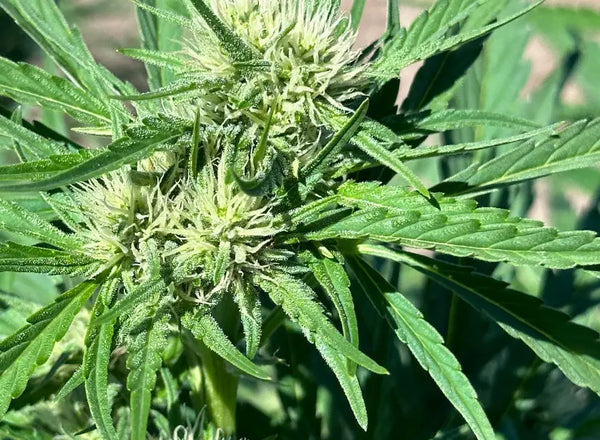
Treatment Protocols: Optimizing THCA for Pain Management
Developing effective THCA protocols for chronic pain management requires careful consideration of multiple factors, including individual patient characteristics, specific pain conditions, concurrent medications, and treatment goals. Unlike pharmaceutical medications with standardized dosing recommendations, cannabinoid chronic pain management often requires personalized approaches that account for individual variations in cannabinoid sensitivity and metabolism.
Dosing Strategies
THCA dosing typically follows a "start low, go slow" approach that minimizes potential side effects while allowing patients to find their optimal therapeutic range. Initial doses often begin with 2.5-5mg of THCA, consumed as raw cannabis preparations or standardized extracts. This conservative starting point allows patients to assess their individual sensitivity and response patterns.
Most patients require 2-4 weeks to establish baseline effects, as the endocannabinoid system may need time to adapt and respond to consistent THCA input. During this initial period, patients typically maintain detailed symptom diaries tracking pain levels, sleep quality, mood changes, and any side effects or adverse reactions.
Dose escalation generally proceeds in 2.5-5mg increments every 3-5 days, depending on patient response and tolerance. Many patients find their optimal therapeutic range between 10-40mg of THCA daily, though some may require higher doses for severe or treatment-resistant conditions. The goal is identifying the minimum effective dose that provides meaningful symptom relief without unwanted effects.
Timing Optimization
The timing of THCA administration can significantly impact therapeutic outcomes, particularly for patients with pain patterns that vary throughout the day. Many chronic pain conditions exhibit circadian variations, with symptoms often worse in the morning due to overnight inactivity or worse in the evening due to accumulated daily stress and fatigue.
For patients with morning stiffness and pain, such as those with rheumatoid arthritis, taking THCA approximately 45-60 minutes before waking can help address symptoms before they become severe. This approach requires careful planning and consistent sleep schedules but can significantly improve morning functionality.
Evening dosing may be more appropriate for patients whose pain interferes with sleep quality. THCA's potential sedating effects, particularly when combined with myrcene-rich terpene profiles, can support both pain relief and sleep improvement. However, some patients may find that evening doses affect next-day alertness and may need to adjust timing accordingly.
Split dosing, with smaller amounts taken 2-3 times daily, may provide more consistent symptom control for patients with persistent pain that doesn't follow clear patterns. This approach can help maintain steady cannabinoid levels while avoiding the peaks and valleys that might occur with single daily doses.
Combination Approaches
Many patients achieve optimal results by combining THCA flower pain benefits with other therapeutic modalities rather than relying on THCA alone. These integrative approaches can enhance therapeutic outcomes while potentially reducing the amount of any single intervention needed for natural pain management.
Physical therapy and exercise programs often complement THCA protocols well, as reduced pain levels may allow patients to participate more fully in rehabilitative activities. The anti-inflammatory effects of THCA may also support recovery from therapeutic exercises while reducing exercise-induced inflammation.
Mind-body interventions, including meditation, yoga, and cognitive behavioral therapy, can address the psychological aspects of chronic pain while THCA addresses physiological components. Many patients report that THCA helps them engage more effectively with mindfulness practices by reducing the distraction of constant pain.
Nutritional interventions targeting inflammation, such as anti-inflammatory diets rich in omega-3 fatty acids and antioxidants, may work synergistically with THCA's anti-inflammatory properties. Some patients report enhanced benefits when combining THCA protocols with dietary changes that support overall inflammatory balance.
Monitoring Methods
Effective THCA protocols require systematic monitoring to track therapeutic outcomes and identify potential issues early. Patients typically maintain detailed logs recording pain levels using standardized scales, functional capacity measures, sleep quality ratings, and mood assessments.
Digital pain tracking applications can simplify this monitoring process while providing valuable data for healthcare providers. These tools often include reminder systems for consistent dosing and can generate reports that facilitate medical consultations and treatment adjustments.
Laboratory monitoring may be appropriate for some patients, particularly those with underlying health conditions or those taking other medications. Liver function tests, inflammatory markers, and other relevant biomarkers can help assess both therapeutic progress and safety parameters.
Regular follow-up appointments with healthcare providers experienced in cannabinoid medicine allow for protocol adjustments based on patient response and changing needs. These consultations should review not only symptom changes but also functional improvements, quality of life measures, and any challenges or concerns that arise during treatment.
Integration with Medical Care: A Collaborative Approach
Successful THCA pain relief protocols require integration with comprehensive medical care rather than replacement of conventional treatment. This collaborative approach ensures that patients receive appropriate monitoring, manages potential interactions with other therapies, and maintains access to the full spectrum of pain management options.
Healthcare Team Coordination
Building an effective healthcare team for chronic pain management involving THCA requires identifying providers who are knowledgeable about cannabinoid medicine or willing to learn. This team might include primary care physicians, pain management specialists, pharmacists familiar with cannabis interactions, and mental health professionals who understand the psychological aspects of chronic pain.
Communication between team members is crucial for optimizing outcomes and ensuring safety. Patients should provide all healthcare providers with complete information about their THCA protocols, including specific products used, dosing schedules, and observed effects. This transparency allows for better decision-making regarding other treatments and medications.
Some healthcare systems have developed specialized cannabis consultation services that can provide guidance on protocol development while coordinating with existing medical teams. These services often include pharmacists with additional training in cannabinoid pharmacology who can address questions about dosing, interactions, and product selection.
Medication Interactions
While THCA appears to have fewer drug interactions than many conventional pain medications, potential interactions still exist and require careful consideration. THCA may influence the metabolism of certain medications through effects on liver enzymes, potentially altering the effectiveness or side effects of other drugs.
Blood thinning medications, including warfarin and newer anticoagulants, may require closer monitoring in patients using THCA due to potential effects on platelet function and blood clotting pathways. Regular INR monitoring and dose adjustments may be necessary to maintain appropriate anticoagulation levels.
Sedating medications, including benzodiazepines, opioids, and certain antidepressants, may have enhanced effects when combined with THCA. Patients using these combinations may experience increased drowsiness or cognitive effects and may need dose adjustments of one or both treatments.
Seizure medications represent another category requiring careful attention, as cannabinoids can influence seizure thresholds and may interact with anticonvulsant medications. Patients with epilepsy or those taking anticonvulsants for neuropathic pain should work closely with neurologists familiar with cannabis interactions.
Progress Tracking
Systematic progress tracking provides essential information for optimizing THCA protocols and demonstrating treatment effectiveness to healthcare providers. This documentation should include both subjective measures (pain ratings, quality of life assessments) and objective measures (functional capacity tests, sleep quality metrics) whenever possible.
Standardized pain assessment tools, such as the Brief Pain Inventory or the McGill Pain Questionnaire, provide validated measures that can be tracked over time and compared to baseline values. These tools assess not only pain intensity but also pain's impact on daily functioning, mood, and overall quality of life.
Functional capacity measures might include walking distances, stair climbing ability, lifting capacity, or other activities relevant to individual patients' daily lives and work requirements. Improvements in these measures often represent more meaningful outcomes than pain scores alone, as they directly relate to independence and quality of life.
Sleep quality tracking using validated instruments or objective measures like actigraphy can provide important information about treatment effectiveness, as sleep disturbance is both a consequence of chronic pain and a factor that can worsen pain perception.
Adjustment Protocols
THCA protocols may require periodic adjustments based on changing symptoms, life circumstances, or treatment responses. These adjustments should be made systematically with appropriate medical supervision to ensure continued safety and effectiveness.
Seasonal variations in pain symptoms may necessitate protocol modifications, as many chronic pain conditions fluctuate with weather changes, activity levels, or other environmental factors. Patients may need higher doses during symptom flares or may be able to reduce doses during periods of improved symptom control.
Disease progression in conditions like arthritis or multiple sclerosis may require protocol adjustments to maintain therapeutic effectiveness. Regular reassessment of treatment goals and expectations helps ensure that protocols remain aligned with patients' evolving needs and circumstances.
Life changes, including new medications, surgical procedures, or significant stressors, may impact optimal THCA dosing and timing. Flexible protocols that can adapt to these changes while maintaining safety parameters support long-term treatment success.
Setting Realistic Expectations: Understanding THCA's Potential and Limitations
While THCA flower chronic pain management offers promising benefits for many patients, it's essential to maintain realistic expectations about outcomes, timelines, and limitations. Understanding these factors helps patients make informed decisions about incorporating THCA into their pain management strategies while avoiding unrealistic hopes that could lead to disappointment.
Success Rate Considerations
Research and clinical experience suggest that approximately 60-70% of chronic pain patients experience meaningful improvements when using well-designed THCA protocols. However, "meaningful improvement" varies significantly between individuals and conditions. For some patients, this might mean a 50% reduction in pain scores and dramatic improvements in daily functioning. For others, it might mean more modest improvements that nonetheless enhance quality of life significantly.
Factors that appear to influence success rates include the specific type of chronic pain, duration of symptoms, previous treatment history, and individual variations in cannabinoid sensitivity. Inflammatory conditions such as arthritis and autoimmune disorders often show higher response rates than purely neuropathic conditions, though both types can benefit from THCA protocols.
Age and overall health status also influence outcomes, with younger, healthier individuals often showing more robust responses than older patients with multiple comorbidities. However, age alone doesn't preclude successful treatment, and many elderly patients achieve significant benefits from carefully managed THCA protocols.
Previous treatment history can impact THCA effectiveness, particularly for patients with histories of extensive opioid use. While THCA can support opioid reduction strategies, patients with long-term opioid exposure may require more intensive protocols and longer adjustment periods to achieve optimal results.
Timeline Variations
The timeline for experiencing benefits from natural pain management with THCA varies considerably between individuals and depends on multiple factors including dosing strategies, specific conditions, and individual physiology. Understanding these variations helps set appropriate expectations and prevents premature discontinuation of potentially beneficial treatments.
Acute effects, such as improvements in sleep quality or reduced anxiety, may be noticeable within days to weeks of initiating THCA protocols. These early improvements often provide encouragement and suggest that the treatment approach is appropriate, even before significant pain improvements become apparent.
Pain relief typically develops more gradually, with most patients noticing initial improvements within 2-4 weeks of reaching their optimal dosing range. However, maximum benefits may not be apparent for 2-3 months, as the endocannabinoid system adapts to consistent cannabinoid input and inflammatory processes gradually resolve.
Functional improvements often follow pain reductions, as reduced discomfort allows patients to gradually increase activity levels and participate more fully in rehabilitation efforts. This progressive improvement cycle can continue for months as patients rebuild strength, endurance, and confidence in their physical capabilities.
Some patients experience fluctuating responses during the initial months of treatment, with periods of improvement alternating with temporary setbacks. This pattern is normal and often resolves as protocols are refined and optimal dosing strategies are established.
Individual Response Variations
Individual variations in THCA response reflect the complex interplay between genetics, physiology, lifestyle factors, and specific disease characteristics. These variations mean that protocols must be individualized rather than following standardized approaches applicable to all patients.
Genetic variations in cannabinoid receptor expression, enzyme function, and drug metabolism can significantly influence THCA effectiveness and optimal dosing. While genetic testing for cannabinoid response is still emerging, family history of cannabis sensitivity or effectiveness may provide some guidance for protocol development.
Body composition, particularly body fat percentage, can influence cannabinoid distribution and elimination, potentially affecting dosing requirements and response duration. Patients with higher body fat percentages may require different dosing strategies than those with lower body fat levels.
Concurrent medications and supplements can influence THCA effectiveness through various mechanisms, including effects on absorption, metabolism, and receptor activity. Comprehensive medication reviews help identify potential interactions and optimization opportunities.
Lifestyle factors, including diet, exercise, sleep patterns, and stress levels, significantly impact chronic pain and may influence THCA effectiveness. Patients with healthier overall lifestyles often achieve better results with chronic pain alternatives compared to those with multiple health challenges.
Limitation Acknowledgment
While THCA offers significant potential for chronic pain management, it's important to acknowledge its limitations and the situations where other interventions may be more appropriate. This honest assessment helps patients make informed decisions about their treatment approaches.
THCA may not provide adequate relief for all types of chronic pain, particularly severe neuropathic conditions or pain related to advanced malignancies. In these cases, THCA might serve as an adjunctive treatment alongside more intensive interventions rather than a primary therapeutic approach.
Legal and access limitations affect many patients' ability to obtain high-quality THCA products or receive appropriate medical guidance. These barriers can significantly impact treatment outcomes and may limit THCA's applicability for some individuals.
Cost considerations represent another limitation, as THCA products may not be covered by insurance and can be expensive for patients requiring higher doses or specialized preparations. Financial barriers can prevent patients from maintaining consistent protocols or accessing optimal product formulations.
Quality control and standardization issues in cannabis markets can affect treatment consistency and outcomes. Variations in product potency, purity, and composition between batches or suppliers can impact therapeutic effectiveness and safety.
Individual tolerance and side effects, while generally mild with THCA, may limit treatment options for some patients. Digestive upset, fatigue, or other adverse effects may prevent some individuals from using effective doses or maintaining consistent protocols.
Getting Started Safely: A Practical Guide
Beginning THCA pain relief protocols requires careful planning, appropriate medical supervision, and systematic approaches that prioritize safety while optimizing therapeutic outcomes. This practical guide provides essential information for patients considering THCA as part of their chronic pain management strategy.
Initial Consultation Needs
Before beginning any THCA protocol, patients should undergo comprehensive medical evaluation to assess their suitability for cannabinoid treatment and identify potential risks or contraindications. This evaluation should include review of current medications, medical history, previous treatment responses, and specific pain characteristics.
Healthcare providers should assess cardiac status, as cannabinoids can influence heart rate and blood pressure in some individuals. Patients with significant cardiovascular disease may require specialized monitoring or modified protocols to ensure safety.
Liver function evaluation is important, particularly for patients taking other medications metabolized by the liver or those with histories of liver disease. While THCA appears to have minimal liver toxicity, baseline function assessment provides important safety information.
Mental health screening helps identify patients who might be at risk for cannabis-related anxiety or other psychological effects, even with non-psychoactive THCA preparations. Patients with histories of substance abuse or certain psychiatric conditions may require specialized approaches or additional monitoring.
Pregnancy and breastfeeding represent absolute contraindications for THCA use, as cannabinoids can cross the placenta and appear in breast milk. Women of childbearing age should receive appropriate counseling about contraception and pregnancy planning while using THCA protocols.
Starting Protocols
Safe initiation of THCA flower pain benefits begins with conservative dosing strategies that allow patients to assess their individual response patterns while minimizing risk of adverse effects. These protocols should be implemented with appropriate medical supervision and systematic monitoring.
Product selection represents the first critical decision, as THCA preparations vary significantly in potency, purity, and additional cannabinoid content. High-quality, laboratory-tested products from reputable sources provide the most predictable and safe treatment outcomes.
Initial dosing typically begins with 2.5-5mg of THCA, taken once daily at a consistent time. This conservative approach allows assessment of basic tolerance and response patterns before progressing to therapeutic doses.
Timing optimization should consider individual pain patterns and lifestyle factors. Morning dosing may be appropriate for patients with morning stiffness, while evening dosing might benefit those with sleep-related pain issues.
Documentation from the beginning of treatment provides essential information for protocol optimization and medical consultations. Patients should maintain detailed records of dosing, timing, effects, and any concerns or adverse reactions.
Monitoring Requirements
Systematic monitoring during THCA protocol initiation and ongoing treatment ensures safety while providing information needed for optimization. This monitoring should include both patient self-assessment and appropriate medical supervision.
Daily symptom tracking using validated pain scales and functional assessments provides objective measures of treatment response. Digital applications can simplify this process while generating useful reports for healthcare providers.
Weekly check-ins during the initial month of treatment allow for timely identification of issues and appropriate protocol adjustments. These contacts can be conducted via telephone or secure messaging systems with healthcare providers.
Laboratory monitoring may be appropriate for certain patients, particularly those with underlying health conditions or complex medication regimens. Liver function tests, inflammatory markers, and other relevant parameters can provide additional safety and efficacy information.
Emergency protocols should be established before beginning treatment, including instructions for managing potential adverse reactions and contact information for appropriate medical support.
Support Resources
Access to knowledgeable support resources significantly improves treatment outcomes and patient satisfaction with THCA protocols. These resources provide education, troubleshooting assistance, and ongoing guidance throughout the treatment process.
Healthcare provider networks specializing in cannabinoid medicine can provide expert guidance on protocol development, monitoring, and optimization. These specialists often have experience managing complex cases and can provide valuable insights for challenging situations.
Patient education materials, including reputable websites, books, and scientific publications, help patients understand their treatment options and make informed decisions about their care. However, patients should verify information sources and prioritize evidence-based resources.
Patient support groups, both online and in-person, provide opportunities for individuals using THCA protocols to share experiences, challenges, and successful strategies. These peer support networks can be invaluable for maintaining motivation and accessing practical tips for treatment optimization.
Professional organizations and advocacy groups often provide resources for both patients and healthcare providers, including educational materials, conference proceedings, and research updates that can inform treatment decisions.
Conclusion: Balancing Hope with Realism
The emergence of THCA flower chronic pain management represents a significant development in the ongoing search for safer, more effective alternatives to conventional pain medications. The research evidence, combined with compelling patient success stories, suggests that THCA offers genuine therapeutic potential for many individuals struggling with chronic pain conditions.
However, this potential must be balanced with realistic expectations and appropriate medical supervision. THCA is not a miracle cure, nor is it appropriate for all patients or all types of chronic pain. Success with THCA pain relief requires careful protocol development, systematic monitoring, and integration with comprehensive medical care.
Frequently Asked Questions
What is THCA flower and how does it differ from regular cannabis?
THCA flower chronic pain management utilizes the raw, unheated form of cannabis that contains high levels of THCA (tetrahydrocannabinolic acid). Unlike regular cannabis that has been dried and cured, THCA flower maintains the acidic precursor to THC, which doesn't produce psychoactive effects until it's heated through a process called decarboxylation.
How quickly can I expect to see results from THCA pain relief?
Most patients begin noticing improvements in sleep quality and general wellbeing within 1-2 weeks of starting THCA pain relief protocols. Significant pain reduction typically develops over 2-4 weeks, with maximum benefits often apparent after 2-3 months of consistent use.
Can THCA help with specific conditions like fibromyalgia or arthritis?
Research and patient testimonials THCA suggest that inflammatory conditions like arthritis often respond well to THCA protocols. Fibromyalgia patients frequently report improvements in pain, sleep, and cognitive function when using raw cannabis chronic pain management strategies.
Is THCA safe to use with other medications?
While THCA appears to have fewer drug interactions than many conventional pain medications, it's essential to work with healthcare providers familiar with cannabinoid chronic pain management. Potential interactions may occur with blood thinners, sedating medications, and seizure medications.
How do I determine the right dosage for my chronic pain?
THCA dosing follows a "start low, go slow" approach, typically beginning with 2.5-5mg daily and gradually increasing based on response. Most patients find their optimal therapeutic range between 10-40mg daily of THCA flower pain benefits, but individual needs vary significantly.
What should I look for when choosing THCA products?
Quality THCA products should be laboratory-tested for potency and purity, sourced from reputable suppliers, and properly stored to maintain cannabinoid integrity. Look for products that provide detailed cannabinoid profiles and have been tested for contaminants like pesticides and heavy metals when exploring chronic pain alternatives.
Can THCA help me reduce my dependence on opioid medications?
Many patients successfully use natural pain management with THCA as part of opioid reduction strategies. However, this process requires careful medical supervision and gradual tapering protocols to ensure safety and maintain adequate pain control throughout the transition.

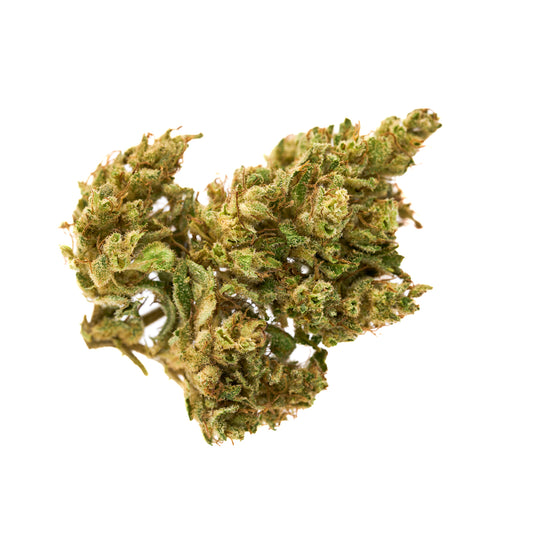
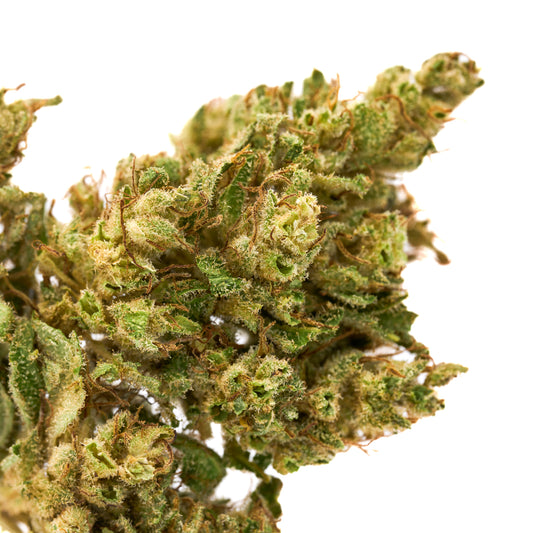
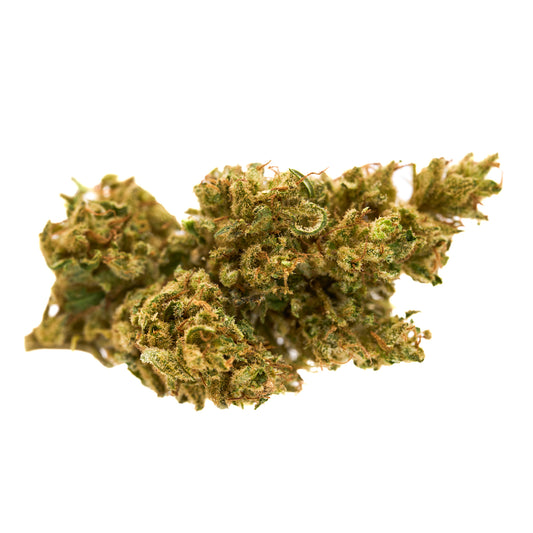
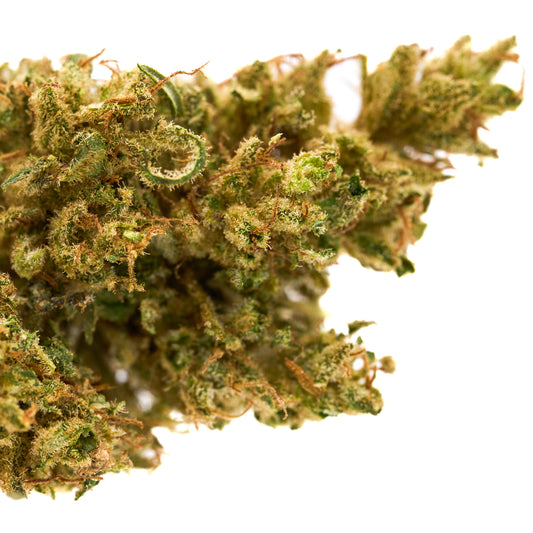
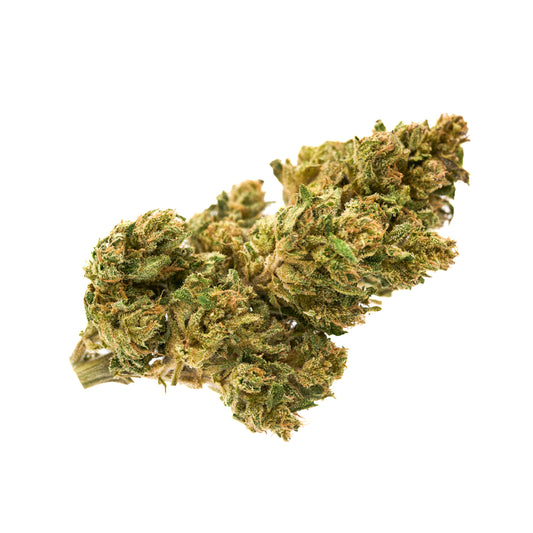
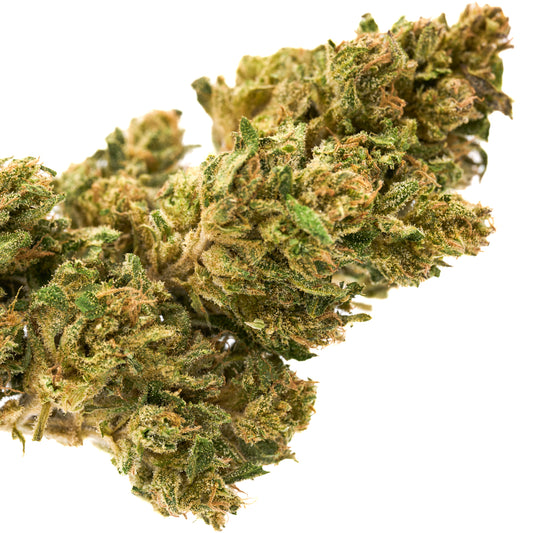





Leave a comment
Please note, comments need to be approved before they are published.